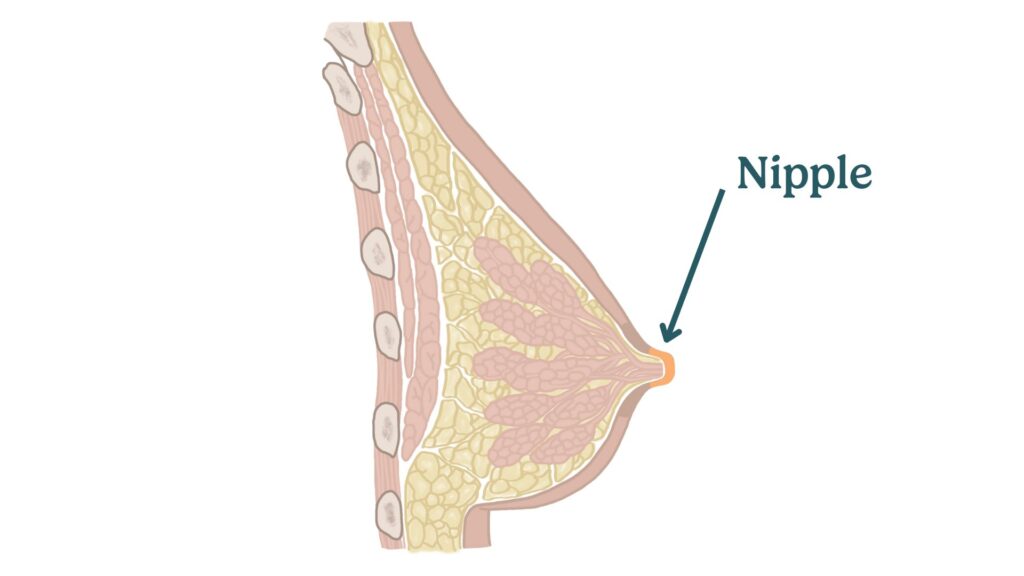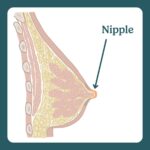nipple

Nipple
The nipple is the small, raised part of the breast through which milk flows from the milk ducts to your baby during breastfeeding. It is surrounded by the areola, the darker area of skin that contains Montgomery glands.
The nipple plays a crucial role in breastfeeding as it is the point where your baby latches to draw milk. Proper latch and nipple care are essential for a successful breastfeeding experience.
Warnings
Being aware of potential issues related to the nipple can help prevent and address problems early:
- Nipple Pain: Pain during breastfeeding can be due to a poor latch, thrush (a yeast infection), or dry, cracked skin. Ensuring a proper latch and using nipple balms can help. If pain persists, consult with a lactation consultant.
- Cracked or Bleeding Nipples: Cracked or bleeding nipples can result from a poor latch or excessive dryness. Applying breastmilk or a nipple balm to the area and ensuring your baby is latching correctly can promote healing. Seek professional help if the problem continues.
- Infections: Conditions such as mastitis or thrush can affect the nipples, causing pain, redness, or swelling. Mastitis might also come with flu-like symptoms. If you suspect an infection, it's important to seek medical advice promptly for appropriate treatment.
Physical Limitations or Health Circumstances
Certain health circumstances can impact nipple function:
- Flat or Inverted Nipples: Some women have flat or inverted nipples, which can make latching more difficult. Using nipple shields and/or working with a lactation consultant can help manage these challenges.
- Previous Breast Surgery: Surgeries such as breast augmentation or reduction can affect the nipple's sensitivity and milk flow. Discuss any concerns with your healthcare provider to ensure successful breastfeeding.
- Skin Conditions: Eczema, psoriasis, or other skin conditions can cause nipple sensitivity or pain. Managing these conditions with appropriate treatments can help maintain healthy nipples for breastfeeding.
Other Terms
Understanding these related terms can enhance your breastfeeding knowledge:
- Areola: The darkened area around the nipple that helps the baby find the nipple and contains Montgomery glands.
- Latch: The way your baby attaches to your breast. A proper latch is crucial for effective milk transfer and to prevent nipple pain.
- Montgomery Glands: Small glands around the areola that secrete an oily substance to protect and lubricate the nipple.
- Nipple Shield: A silicone cover that can help babies latch on to flat or inverted nipples or protect sore nipples during breastfeeding.


